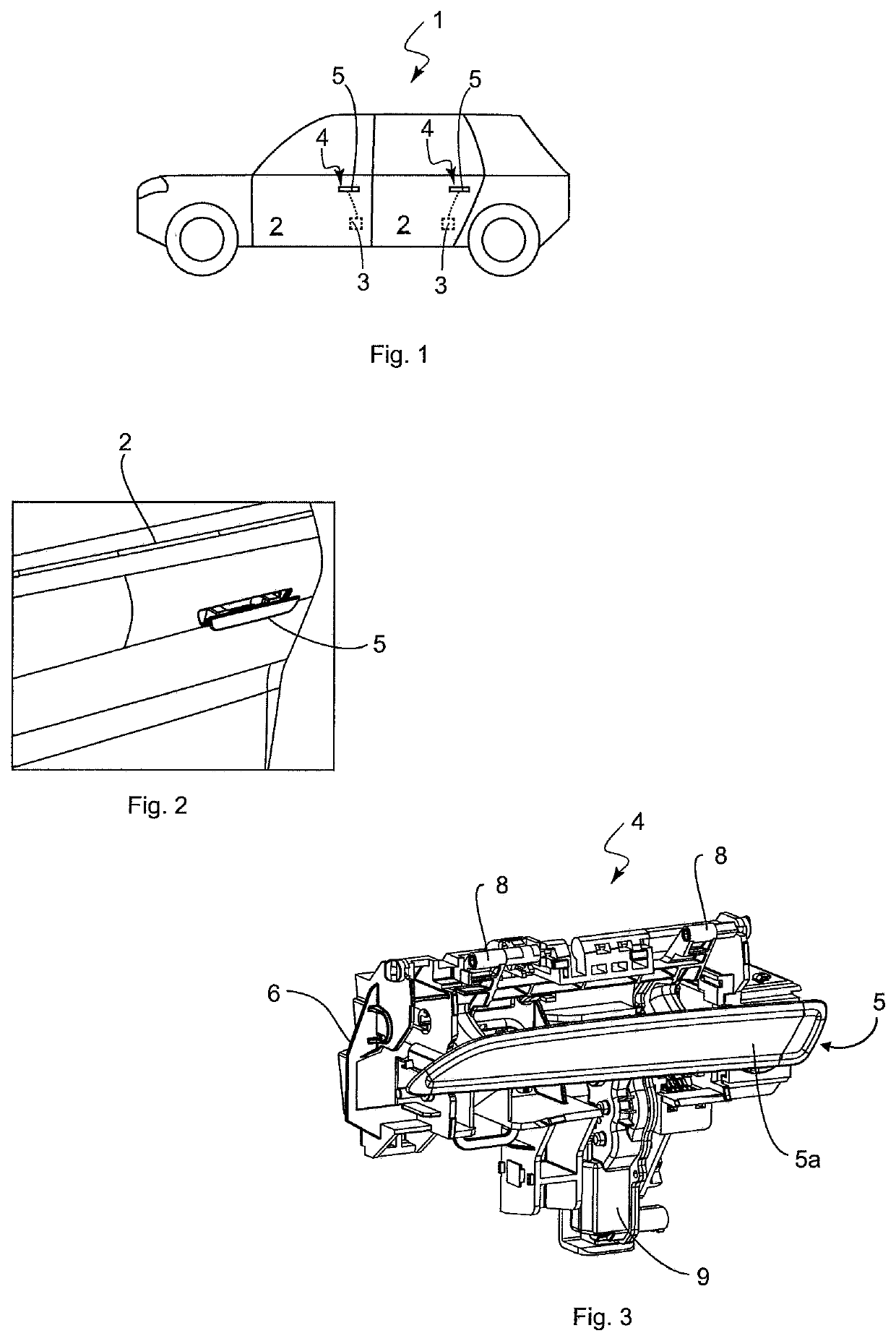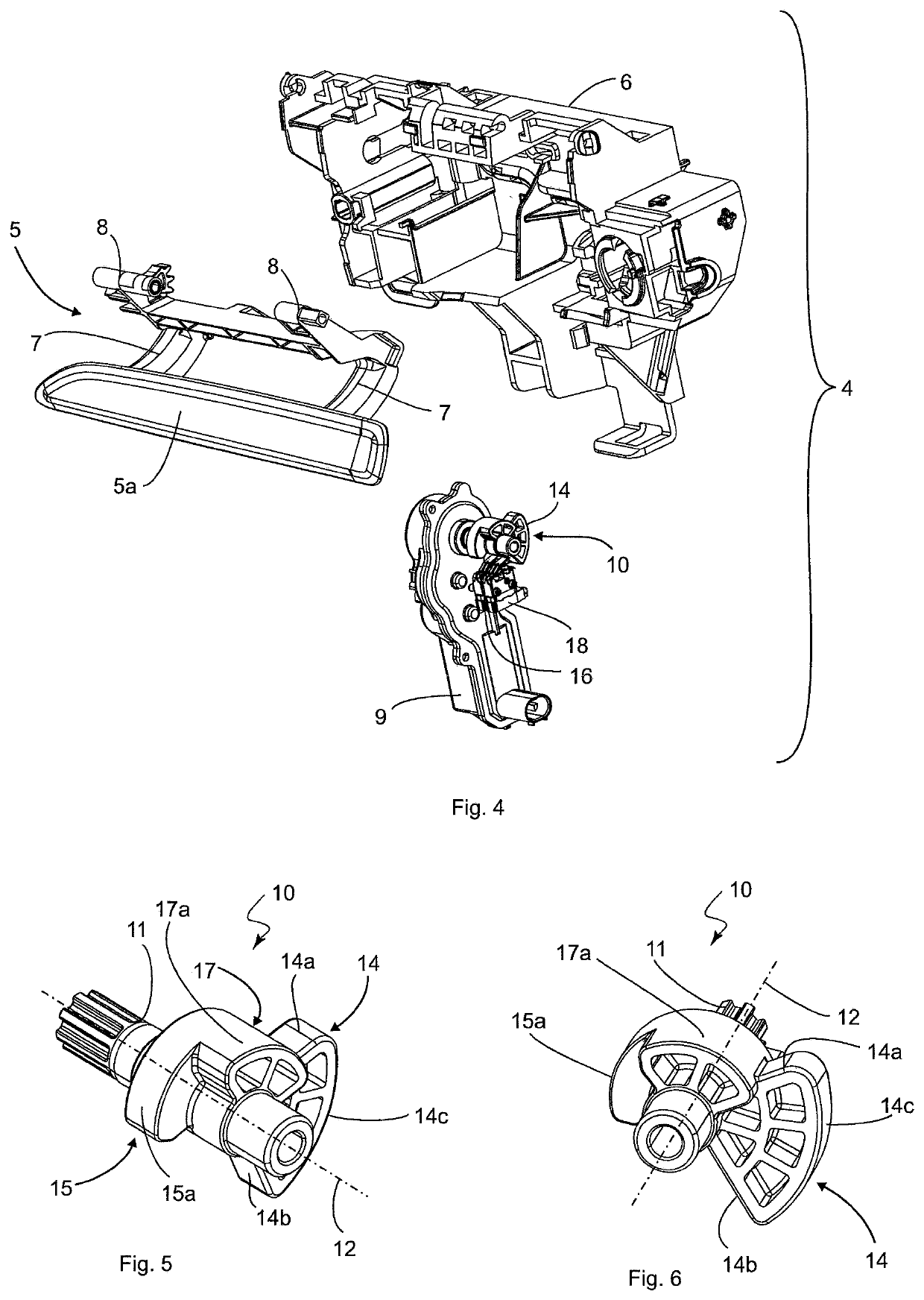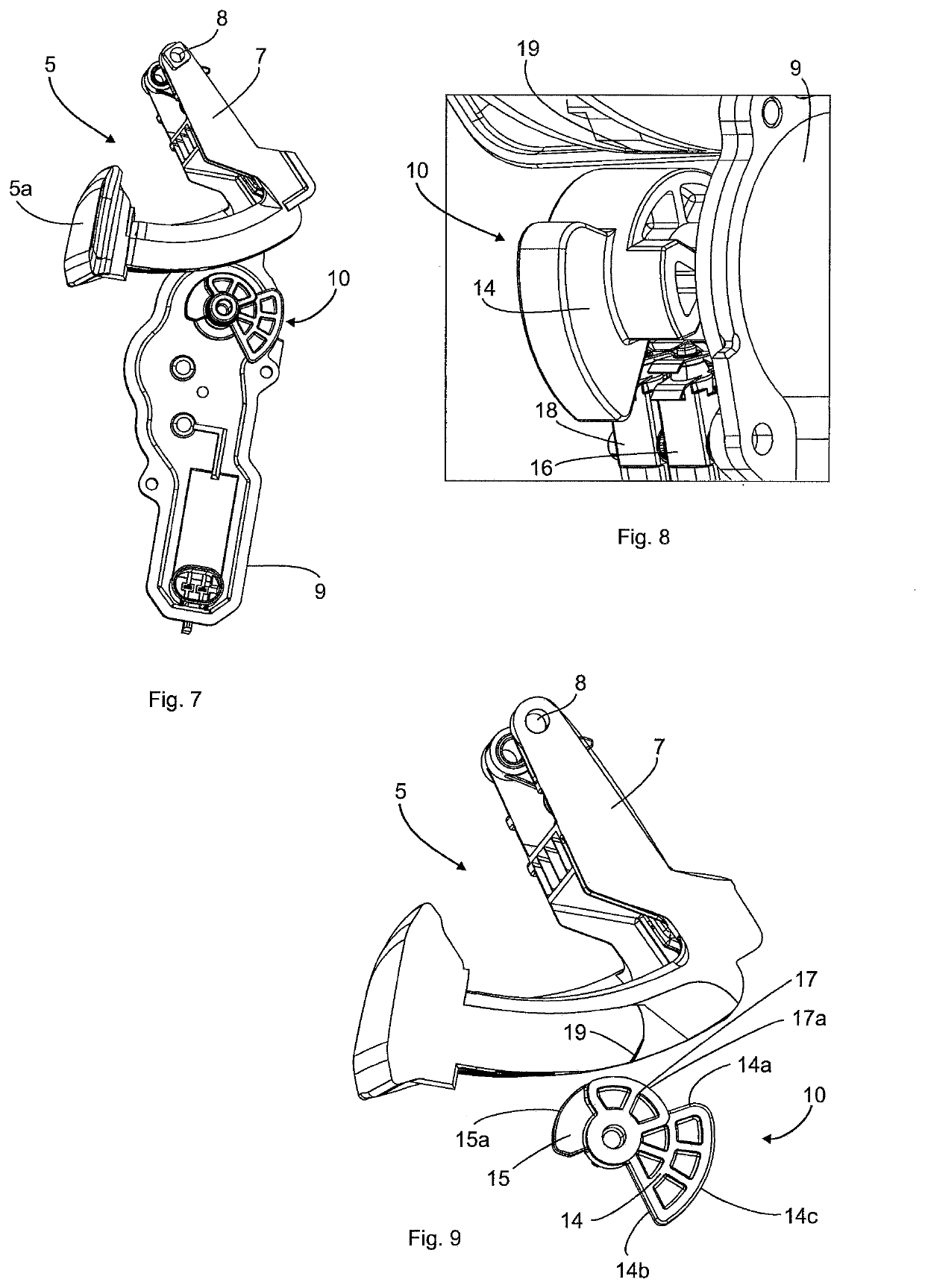Motor vehicle handle
- Summary
- Abstract
- Description
- Claims
- Application Information
AI Technical Summary
Benefits of technology
Problems solved by technology
Method used
Image
Examples
Embodiment Construction
[0035]An exemplary depiction of a motor vehicle 1 in the form of a passenger car is shown in FIG. 1, which has four doors 2 (two of which are shown in FIG. 1) in the example. The doors 2 can be locked via respective motor vehicle locks 3, and can be unlocked using a motor vehicle actuation device 4, merely indicated by way of example in FIG. 1, in that a user actuates a functional element 5 of the motor vehicle actuation device 4 designed as a handle.
[0036]FIG. 2 shows a perspective view of the door 2, in which the functional element 5 protrudes out of the door 2. The functional element 5 is a handle 5a, which is flush with the door 2 in the unactuated stated, attached to pivot arms 7, such that the handle is recessed in the door 2 when not in use.
[0037]A perspective view of the motor vehicle actuation device 4 is shown in FIG. 3. The motor vehicle actuation device 4 comprises a carrier housing 6, which is attached on the inside of the door 2, and on which the functional element 5, ...
PUM
 Login to View More
Login to View More Abstract
Description
Claims
Application Information
 Login to View More
Login to View More - R&D
- Intellectual Property
- Life Sciences
- Materials
- Tech Scout
- Unparalleled Data Quality
- Higher Quality Content
- 60% Fewer Hallucinations
Browse by: Latest US Patents, China's latest patents, Technical Efficacy Thesaurus, Application Domain, Technology Topic, Popular Technical Reports.
© 2025 PatSnap. All rights reserved.Legal|Privacy policy|Modern Slavery Act Transparency Statement|Sitemap|About US| Contact US: help@patsnap.com



